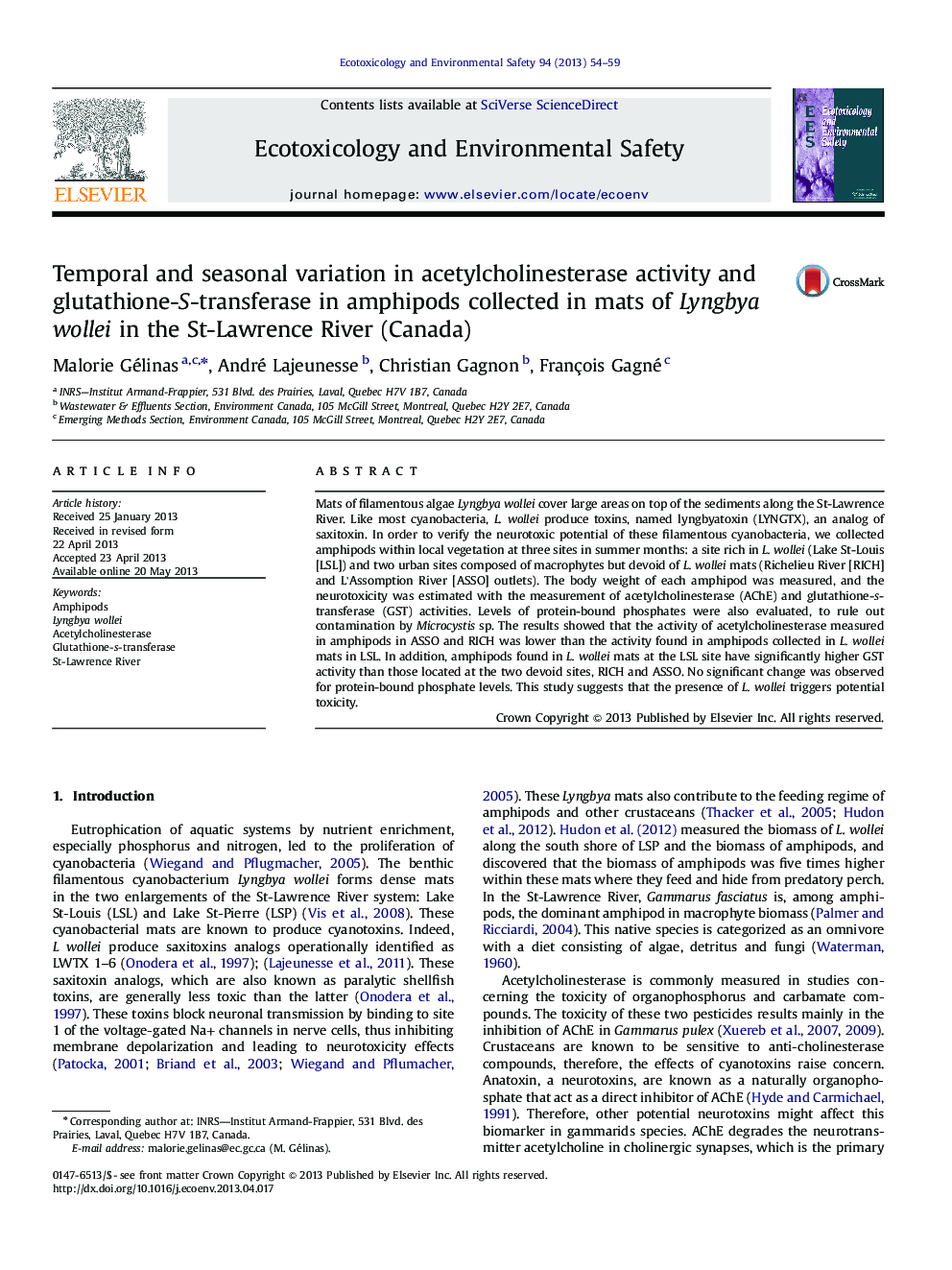| Article ID | Journal | Published Year | Pages | File Type |
|---|---|---|---|---|
| 4420483 | Ecotoxicology and Environmental Safety | 2013 | 6 Pages |
•Lyngbya wollei, a benthic cyanobacteria, produced an analog of saxitoxins.•Amphipods were exposed to toxic L. wollei in their natural habitat.•Neurotoxicity was observed in amphipods exposed to mats of L. wollei.•Microcystins effects were not observed.•Biotransformation, GST activity, was observed in amphipods exposed to L. wollei.
Mats of filamentous algae Lyngbya wollei cover large areas on top of the sediments along the St-Lawrence River. Like most cyanobacteria, L. wollei produce toxins, named lyngbyatoxin (LYNGTX), an analog of saxitoxin. In order to verify the neurotoxic potential of these filamentous cyanobacteria, we collected amphipods within local vegetation at three sites in summer months: a site rich in L. wollei (Lake St-Louis [LSL]) and two urban sites composed of macrophytes but devoid of L. wollei mats (Richelieu River [RICH] and L'Assomption River [ASSO] outlets). The body weight of each amphipod was measured, and the neurotoxicity was estimated with the measurement of acetylcholinesterase (AChE) and glutathione-s-transferase (GST) activities. Levels of protein-bound phosphates were also evaluated, to rule out contamination by Microcystis sp. The results showed that the activity of acetylcholinesterase measured in amphipods in ASSO and RICH was lower than the activity found in amphipods collected in L. wollei mats in LSL. In addition, amphipods found in L. wollei mats at the LSL site have significantly higher GST activity than those located at the two devoid sites, RICH and ASSO. No significant change was observed for protein-bound phosphate levels. This study suggests that the presence of L. wollei triggers potential toxicity.
